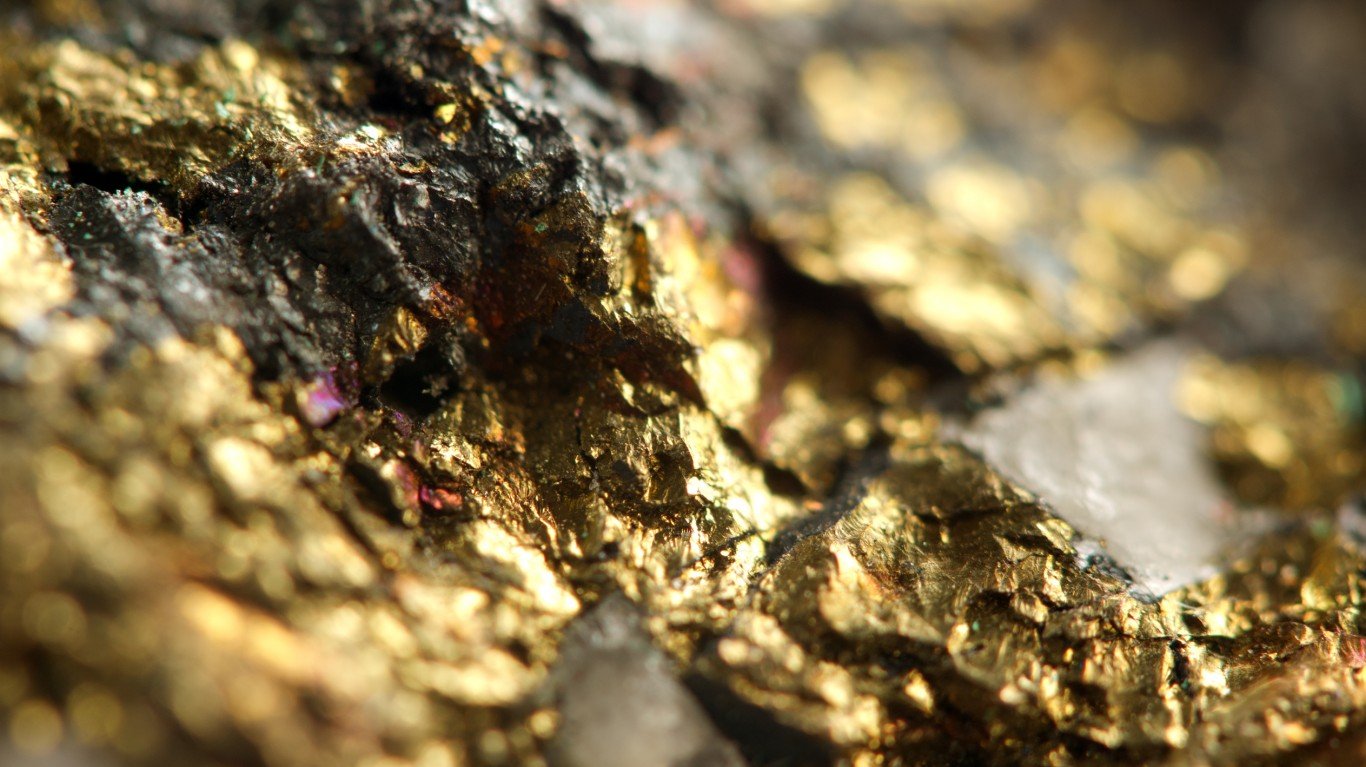

While stocks were incredibly volatile in the first quarter of 2020 as the instant recession from COVID-19 took over, the asset that thrived and attracted investors was gold. After all, gold is perhaps the greatest hedge against uncertainty. It also turns out that the Federal Reserve’s efforts to go back to the zero-interest policy while printing $2.2 trillion to keep the economy going is another big boost for gold.
Investors around the globe poured a record amount into gold-backed exchange-traded funds (ETFs) and exchange-traded products during the first quarter of 2020. The pandemic drove the interest as financial markets went into a panic.
The World Gold Council announced on Wednesday that inflows into gold ETFs rose by 5%, 151 tonnes or $8.1 billion, in March. It was not just the United States driving gold. The European Union was an even worse hot spot of the coronavirus in March, and European funds had the largest interest in gold ETFs.
According to the World Gold Council’s review for the first quarter of 2020, global gold-backed ETFs and similar products added 298 tonnes, with net inflows of $23 billion globally. On top of being the largest quarterly amount ever in absolute terms in U.S. dollars, this was the single largest quarterly gain in tonnes since 2016.
Over the past year, gold ETFs added 659 tonnes, and that was said to mark the highest amount on a rolling annual basis going back to the global financial crisis. At the same time, ETF and equivalent assets under management rose 57%.
By the end of March, gold ETFs combined had an all-time high of 3,185 tonnes. Also worth noting was that trading volumes in those ETFs and the assets under management reached record highs. The World Gold Council said:
Gold prices denominated in many other currencies, however, continued to reach all-time highs although the price in US dollars remained 15% below its 2011 high. This highlights a continued trend of growth in gold ETFs outside of the US over the past few years; a trend underscored by European funds seeing the largest absolute inflows and Asia and other regions registering the largest percentage growth during the month.
The regional data showed where the largest interest was:
- European funds added 84 tonnes, or $4.4 billion.
- North American funds added 57 tonnes, or $3.2 billion.
- Asian funds (mostly China) added 4.9 tonnes, or $309 million.
- Funds in other regions combined added 4.7 tonnes, or $249 million.
One interesting aspect of gold, despite the record inflows, was that the price of gold did not surge in March. Many investors were forced to or decided to lock in gains to raise liquidity when the broader economies and stock markets were in panic. Many individuals were also in cash-raising mode.
As for comparing the economy of today to the 2008 to 2009 financial crisis, the World Gold Council said:
When stocks sold off sharply in 2008 gold experienced a few pullbacks, falling more than 30% from peak to trough but rallied back to close 4% higher on the year. What followed was the initial Quantitative Easing (QE) program in the US, along with similar monetary policy interventions worldwide, which propelled gold over 600% higher at its peak in September 2011. Other drivers included: higher risk, particularly in the European region, gold’s store of value quality coming to the fore and an improved opportunity cost in the face of lower rates. In the three months leading up to the September 2008 Lehman Brothers bankruptcy, gold-backed ETF flows were relatively unchanged. Following the QE announcement, gold ETFs added 146 tonnes, or 15% to their holdings over the next two weeks and a total of 235 tonnes, or 24% to their holdings through the end of 2008, with an additional 1,296 tonnes, or 107% in the following three years.
24/7 Wall St. wanted to check on the U.S. gold ETFs for their current size that included data even more recently than the end of the first quarter of 2020.
The SPDR Gold Shares (NYSEARCA: GLD) is the largest gold ETF of them all. As of the April 7, 2020 close, its $52.26 billion in assets was still about 150% larger than the iShares Gold Trust (NYSEARCA: IAU), with its $20.9 billion in assets. The difference here is that the SPDR ETF has a 0.40% expense ratio, versus 0.25% for the iShares ETF. According to the ETFdb.com portal on gold ETFs, the remaining 16 gold themed ETFs trading in the United States covering the metal (not the miners) had less than $4 billion in total combined assets.
Take This Retirement Quiz To Get Matched With A Financial Advisor (Sponsored)
Take the quiz below to get matched with a financial advisor today.
Each advisor has been vetted by SmartAsset and is held to a fiduciary standard to act in your best interests.
Here’s how it works:
1. Answer SmartAsset advisor match quiz
2. Review your pre-screened matches at your leisure. Check out the
advisors’ profiles.
3. Speak with advisors at no cost to you. Have an introductory call on the phone or introduction in person and choose whom to work with in the future
Take the retirement quiz right here.
Thank you for reading! Have some feedback for us?
Contact the 24/7 Wall St. editorial team.
 24/7 Wall St.
24/7 Wall St.


